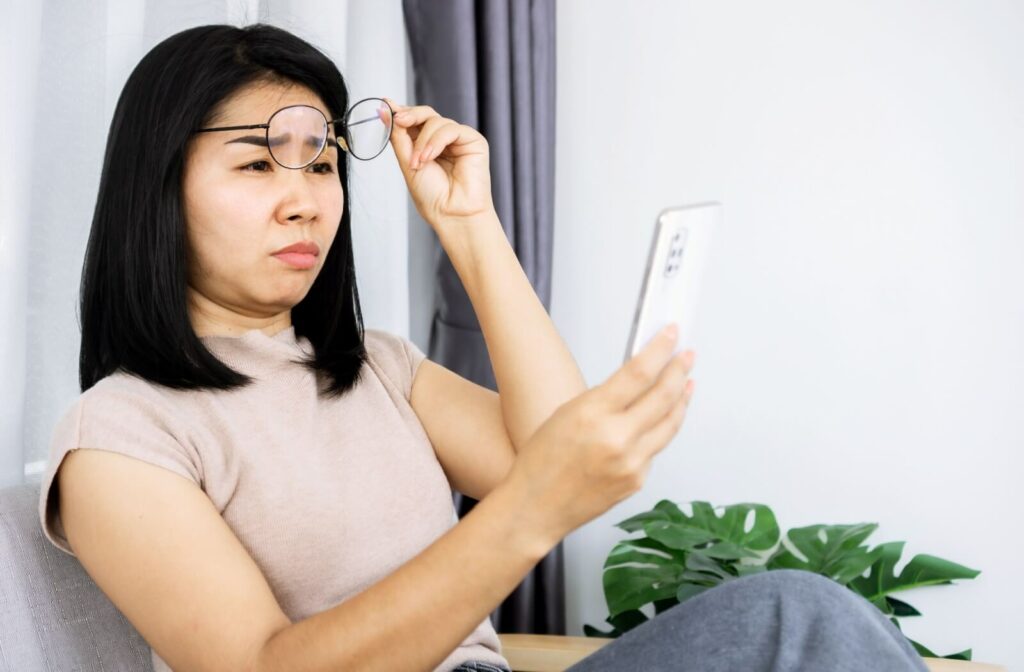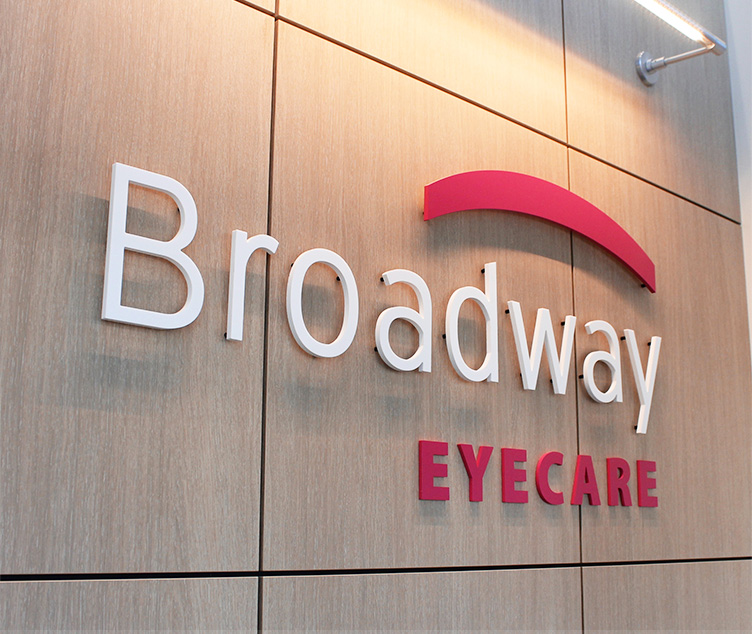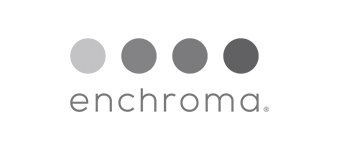Experiencing difficulty seeing things up close even with your glasses on can be both frustrating and concerning. This issue can stem from various factors, such as changes in your vision, the type of glasses you have, or underlying eye conditions.
By understanding why you’re struggling with near vision despite wearing glasses, and by knowing what steps to take to fix this problem, you can help alleviate your vision problems and increase your overall eye health.
When you struggle to see up close with your glasses on, the first and most crucial step is to schedule a comprehensive eye exam. An eye exam not only assesses your current prescription but also evaluates the overall health of your eyes.
Understanding Presbyopia
One of the most common reasons why someone might have difficulty seeing up close is presbyopia. This age-related condition typically begins to affect people in their 40s, and progresses over time. Presbyopia occurs when the lens of the eye becomes less flexible, making it harder to focus on close objects.
Symptoms of Presbyopia:
- Difficulty reading small print
- Needing to hold reading materials at arm’s length
- Eye strain or headaches after close work
Solutions for Presbyopia:
- Reading Glasses: These are single-vision glasses specifically designed for close-up tasks.
- Bifocals: Glasses with two distinct optical powers – one for distance and one for near vision.
- Progressive Lenses: These lenses offer a gradual transition between multiple focal points, providing clear vision at all distances.

Incorrect Prescriptions
Another reason you might struggle with near vision is an incorrect prescription. Over time, your vision can change, and your current glasses may no longer provide the proper level of correction.
Signs of an Incorrect Prescription:
- Blurred vision at certain distances
- Frequent headaches
- Eye strain or discomfort
What to Do:
- Schedule a comprehensive eye exam to update your prescription.
- Ensure your glasses are made accurately according to your newest prescription.
Lens Type & Design
The type and design of your lenses can also impact your ability to see up close. For example, single-vision lenses designed for distance vision won’t help with near tasks. Similarly, if you have progressive lenses, the near vision zone might not be positioned correctly for your needs.
Considerations for Lens Design:
- Single-Vision Lenses: Ensure they are designed for the specific distance you need.
- Bifocals and Progressives: Make sure the near vision zone is appropriately placed and sized for your activities.
Eye Conditions Affecting Near Vision
Several eye conditions can affect your near vision, even with glasses. These include:
Cataracts: A clouding of the eye’s natural lens, often leading to blurred vision. Symptoms include blurred or dim vision, difficulty with night vision, and seeing halos around lights. Cataract surgery is required to replace the cloudy lens with an artificial one.
Macular Degeneration: A condition affecting the central part of the retina, leading to loss of central vision. Symptoms include blurred or wavy vision, difficulty recognizing faces, and dark spots in central vision. Management includes regular eye exams, lifestyle changes, and, in some cases, medication or surgery.
Diabetic Retinopathy: Damage to the blood vessels in the retina due to diabetes. Symptoms are blurred vision, floaters, and difficulty seeing at night. Controlling blood sugar levels, regular eye exams, and laser treatment or surgery if necessary are the treatment options for diabetic retinopathy.
Digital Eye Strain
In today’s digital age, prolonged use of computers, smartphones, and other digital devices can lead to digital eye strain. This condition can cause difficulty focusing on close objects, even with glasses.
Symptoms of Digital Eye Strain:
- Blurred vision
- Dry eyes
- Headaches
- Neck and shoulder pain
Tips to Reduce Digital Eye Strain:
- Follow the 20-20-20 rule: Every 20 minutes, take a 20-second break and look at something 20 feet away.
- Ensure proper light that reduces glare from screens.
- Use computer glasses with blue light filters.
Adjusting to New Glasses
If you’ve recently switched to a new pair of glasses, it might take some time for your eyes to adjust, especially if the prescription or lens design has changed significantly.
Adjustment Period:
- It can take a few days to a few weeks to fully adapt to new glasses.
- If discomfort persists beyond this period, consult your optometrist to check the prescription and fit.
When to Seek Professional Help
If you’re consistently having trouble seeing up close with your glasses, it’s essential to seek professional help. An eye care specialist can diagnose the underlying issue and recommend appropriate solutions.
When to Schedule an Eye Exam:
- If you experience sudden changes in vision
- Persistent eye strain or headaches
- Difficulty performing daily tasks due to vision problems
Turn to Professional Eye Care for Close-Up Clarity
Struggling to see up close with your glasses on can be a sign of various underlying issues, from presbyopia and incorrect prescriptions to eye conditions and digital eye strain. Understanding the cause and seeking appropriate solutions is crucial for maintaining clear and comfortable vision.
At Broadway Eyecare, we are dedicated to providing comprehensive eye care services to help you achieve optimal vision. Whether you need a routine eye exam, updated prescription, or specialized treatment, our team of experienced optometrists is here to assist you. Schedule an appointment today to address your near vision concerns and enjoy clear vision at all distances.









